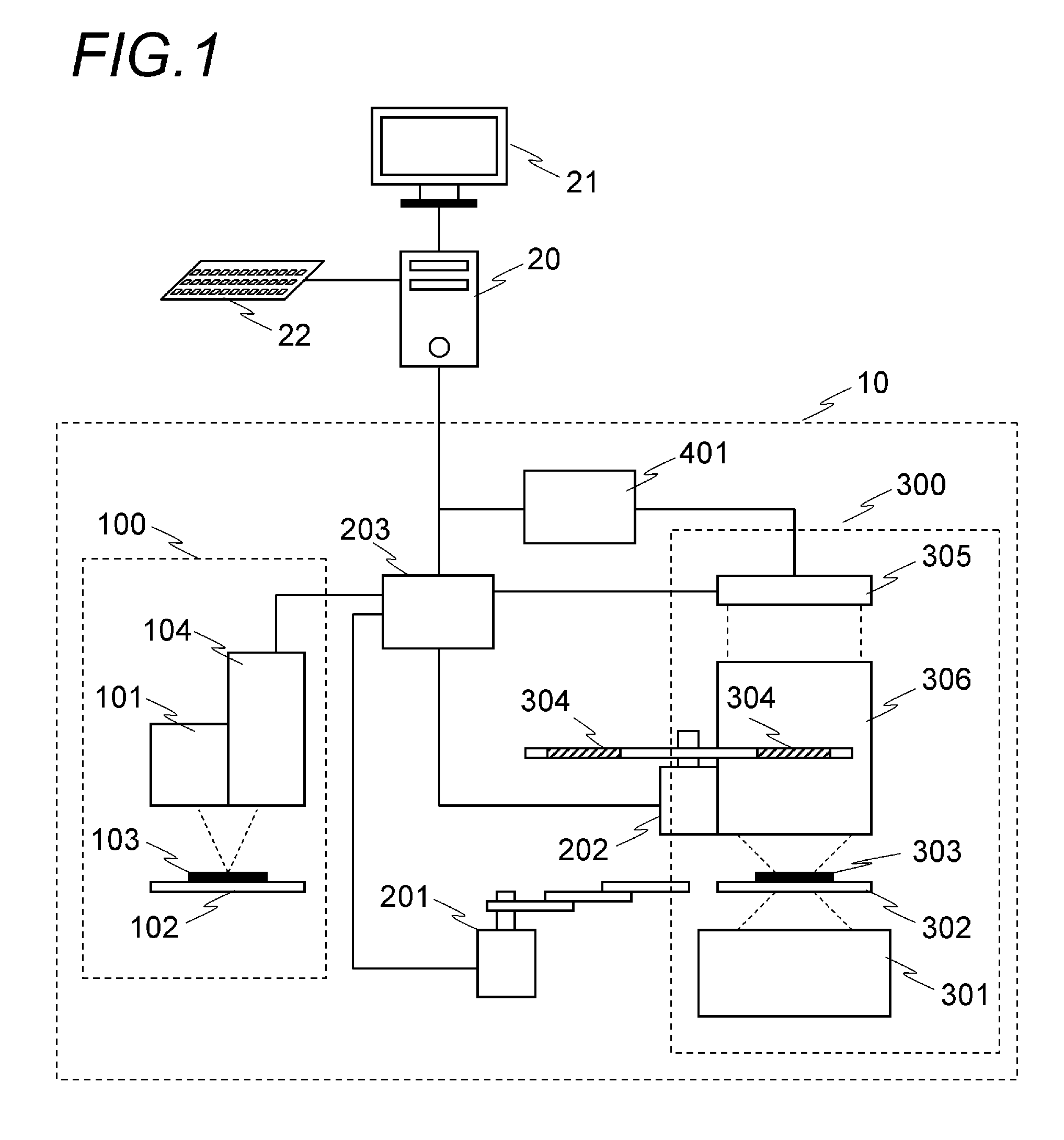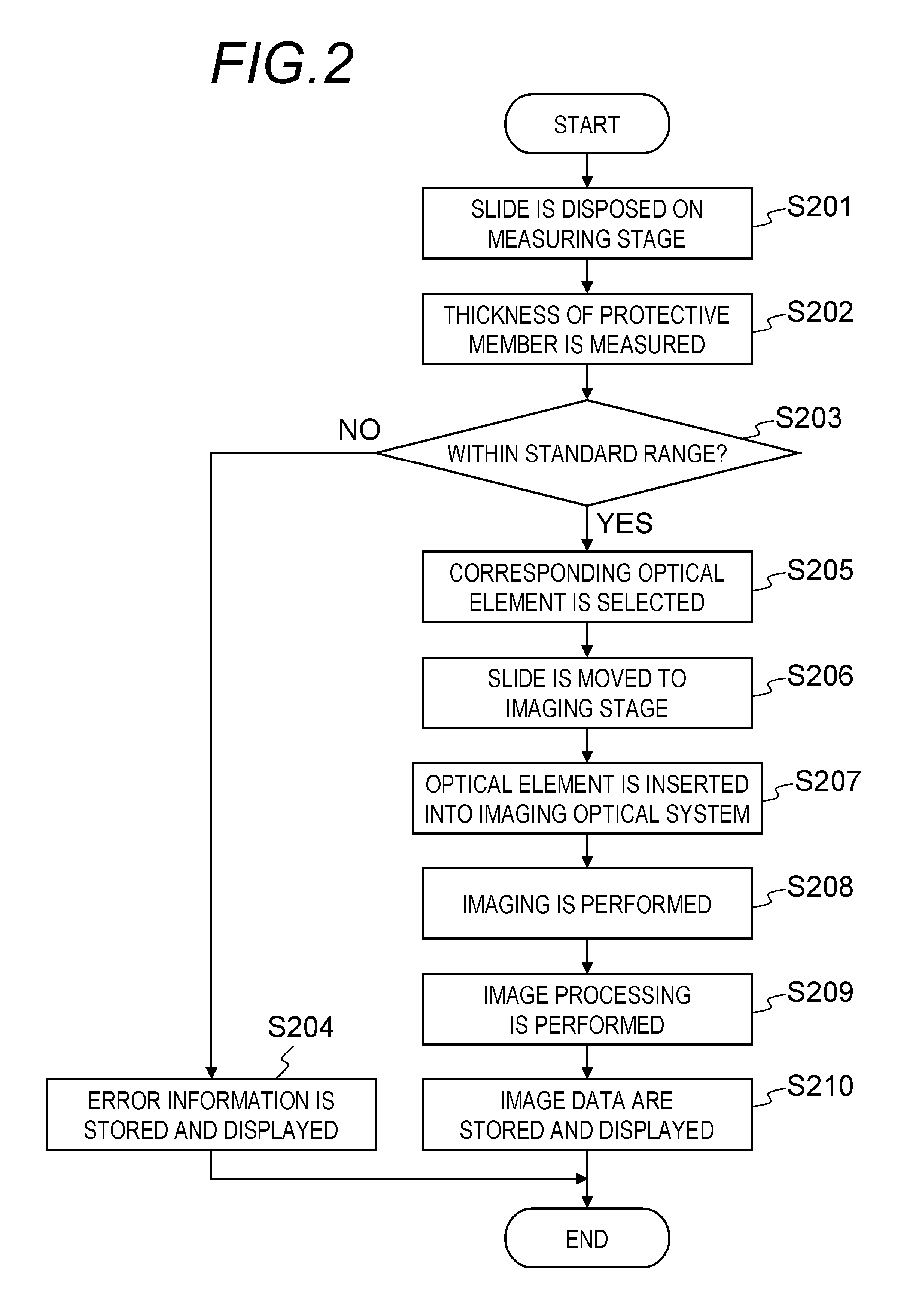Imaging apparatus
- Summary
- Abstract
- Description
- Claims
- Application Information
AI Technical Summary
Benefits of technology
Problems solved by technology
Method used
Image
Examples
first embodiment
[0040]The first embodiment of the image acquisition method performed in the imaging system shown in FIG. 1 will be explained below. In the explanation below, partial regions obtained by dividing an imaging region will be called subregion; the subregions may overlap each other or be in an exclusive relationship. The information relating to the subregions, such as the positions and dimensions thereof, may be designated by the user prior to imaging. The control unit 203 may store such information as a database in advance. In the configuration of the first embodiment, aberration correction is performed by the optical elements 304 of one kind with respect to one slide. Thus, the method of the present embodiment is applied to the case where the optical elements 304 corresponding to the measurement data of a plurality of subregions on the slide measured by the measuring unit 100 are of one kind only.
[0041]FIG. 2 is a flowchart illustrating the processing sequence of the first embodiment. T...
specific example
[0052]A specific example of the above-described first embodiment is explained below.
[0053]FIG. 5 shows simulation results relating to the contrast of a bar chart obtained with a wavelength of the illumination light of the imaging illumination unit 301 of 550 nm, a numerical aperture of the imaging optical system 306 on the specimen side of 0.7, and a refractive index of the cover glass of 1.5. The bar chart used herein has a width of 0.5 μm, a pitch of 1.0 μm, a transmittance on the inner side of the bar of 0, and a transmittance on the outer side of the bar of 1. Spherical aberration caused by the cover glass is represented in radian units by Eq. (1).
[0054]The imaging optical system 306 is assumed to be designed such that the aberration is eliminated when the thickness error of the cover glass is 0 μm, that is, when the supposed thickness is obtained. Further, C in Eq. (1) can be represented by Eq. (3). In Eq. (3), the thickness error of the cover glass is denoted by t, the refract...
second embodiment
[0058]The second embodiment of the image acquisition method in the imaging system shown in FIG. 1 is explained below.
[0059]In the above-described first embodiment, the optical element 304 corresponding to the measurement results obtained for a plurality of points is the same in all of the subregions. However, some protective members have an uneven thickness and the spread in thickness cannot be ignored. Where the imaging by the method of the first embodiment is performed with respect to a specimen covered by such a protective member, an undesirable image is obtained in which regions where the aberration correction has been correctly performed are mixed with regions where such correction has not been performed (over-corrected or under-corrected regions). Accordingly, the processing explained in the second embodiment is performed when the optimum optical element 304 is different for each subregion.
[0060]The processing procedure of the second embodiment is explained with reference to F...
PUM
 Login to View More
Login to View More Abstract
Description
Claims
Application Information
 Login to View More
Login to View More - R&D
- Intellectual Property
- Life Sciences
- Materials
- Tech Scout
- Unparalleled Data Quality
- Higher Quality Content
- 60% Fewer Hallucinations
Browse by: Latest US Patents, China's latest patents, Technical Efficacy Thesaurus, Application Domain, Technology Topic, Popular Technical Reports.
© 2025 PatSnap. All rights reserved.Legal|Privacy policy|Modern Slavery Act Transparency Statement|Sitemap|About US| Contact US: help@patsnap.com



